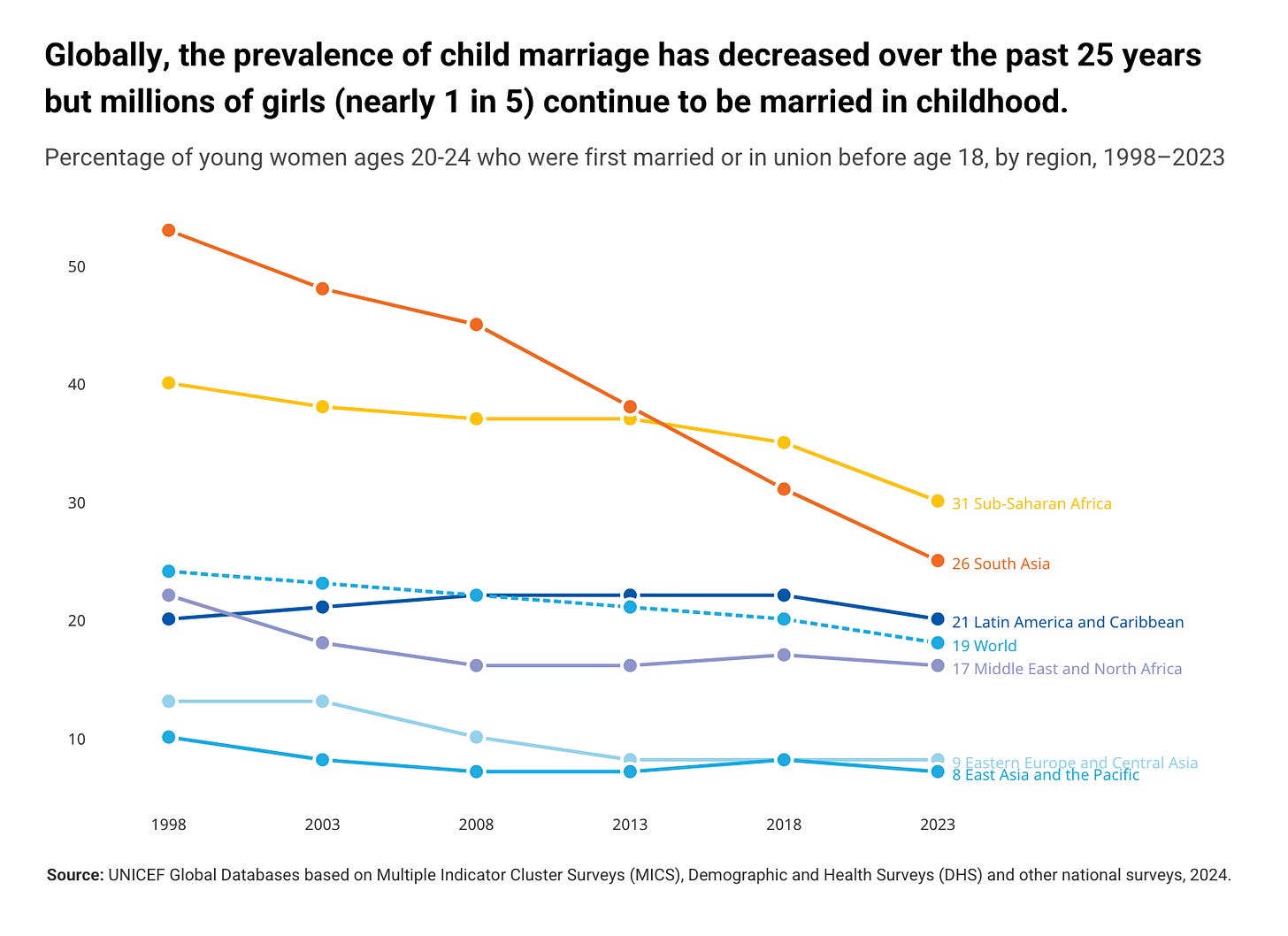Sign up for our newsletter to receive these emails in your inbox.
Stem cell treatment may have reversed paralysis
A man with a spinal cord injury that left him paralyzed is now relearning to walk after a stem cell treatment.
His remarkable recovery occurred during a small trial in Japan, which involved injecting four paralyzed people with stem cells that were “reprogrammed” to develop into the various cells that make up the nervous system.
According to Nature, all four were severely disabled, with “no sensory or motor function below the point of injury.” After the treatment, one can now move his arms and legs, and another, referenced above, can stand on his own.
Child marriage is declining
A recent report from UNICEF contains some very good news: child marriage has become much less popular. Progress was particularly dramatic in South Asia and Sub-Saharan Africa, the regions with the most child brides.

The report also notes a concurrent and likely related drop in the birth rate among adolescent girls (ages 15-19).

The dashed line represents the “World” estimate.
AI is helping repurpose drugs to treat rare diseases
A recent article in The New York Times showcases another emerging niche for artificial intelligence: drug repurposing.
Thanks to versions of the technology developed by Dr. Fajgenbaum’s team at the University of Pennsylvania and elsewhere, drugs are being quickly repurposed for conditions including rare and aggressive cancers, fatal inflammatory disorders and complex neurological conditions. And often, they’re working.
In labs around the world, scientists are using A.I. to search among existing medicines for treatments that work for rare diseases. Drug repurposing, as it’s called, is not new, but the use of machine learning is speeding up the process — and could expand the treatment possibilities for people with rare diseases and few options.
Culture & Tolerance
Economics & Development:
Energy & Environment:
- Earth AI Found Critical Minerals in Places Everyone Else Ignored
- Oystercatcher Recovery Offers Shorebird Conservation Success
- Conservation Efforts Bring Some Species Back from the Brink
Health & Demographics:
- African Region Records Further Decline in TB Deaths and Cases
- FDA Approves Bavarian Nordic’s Chikungunya Vaccine
- Genetically Modified Pig Liver Transplanted Into Chinese Patient
- New Antibiotic Kills Drug-Resistant Bacteria
Science & Technology:
- Drug Firms Are Building Their Own Version of AlphaFold
- NASA Hits the Jackpot With Blue Ghost
- OpenAI Unveils New Image Generator for ChatGPT
- DeepSeek Is Already Everywhere in China
- Can Starlink Finally Crack India?
- Vietnam Allows Elon Musk’s Starlink to Provide Pilot Service
- Alphabet Spins off Starlink Competitor Taara
- Waymo Plans Robotaxi Launch in Washington, DC in 2026
- Groundbreaking Map Made of Human Brain Mitochondria
- AI-Powered Databases Boost Alzheimer’s Drug Discovery
